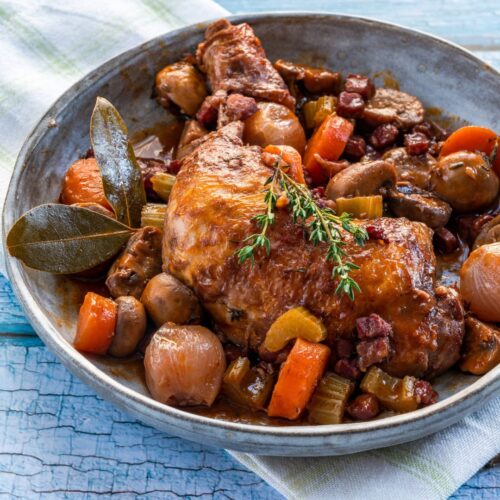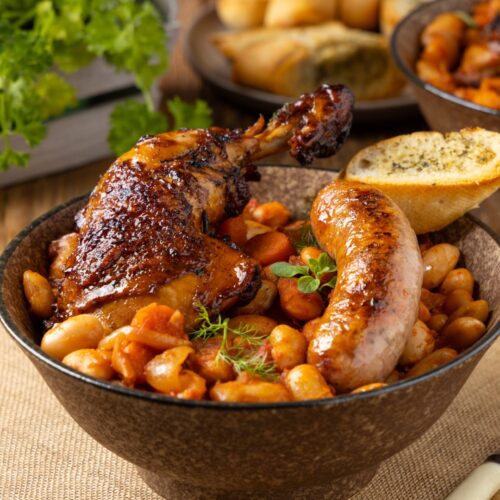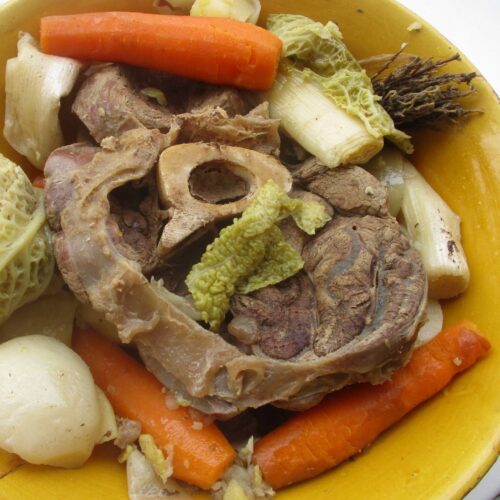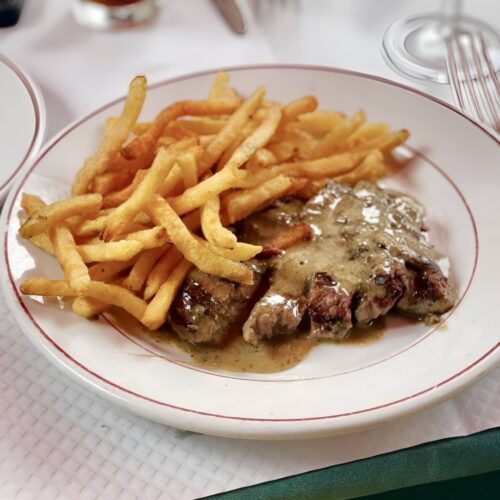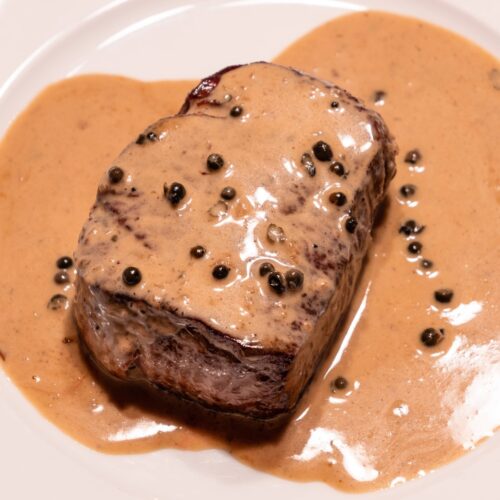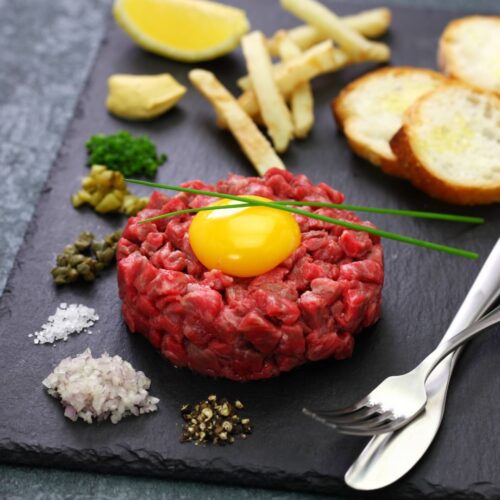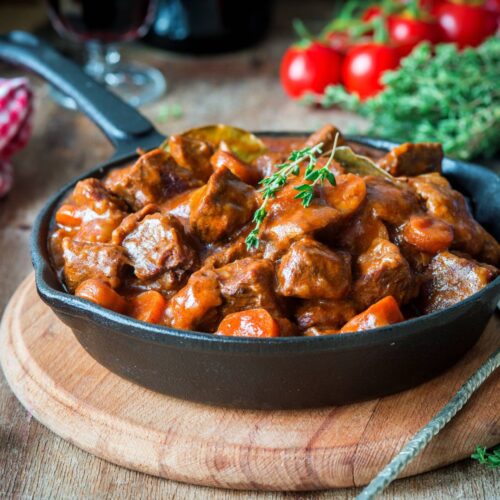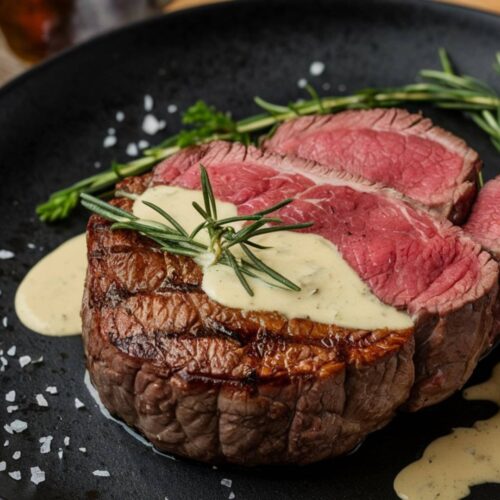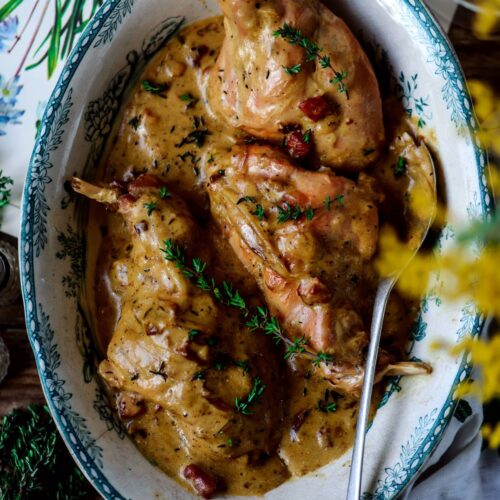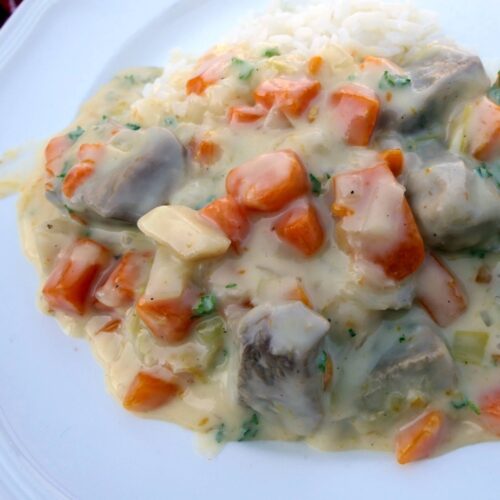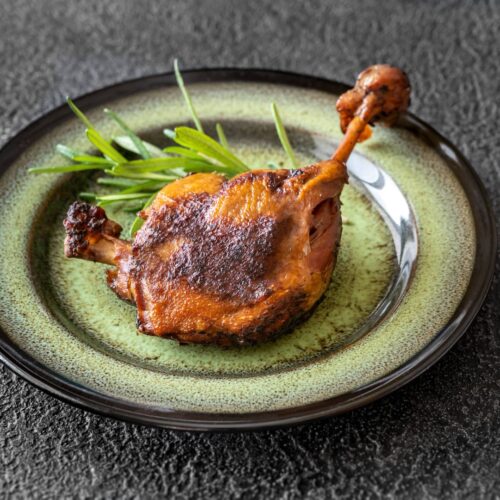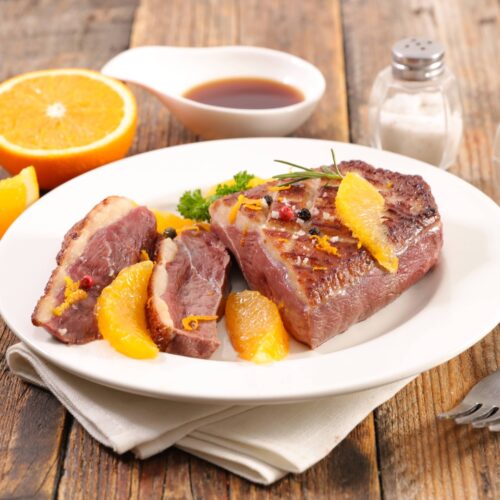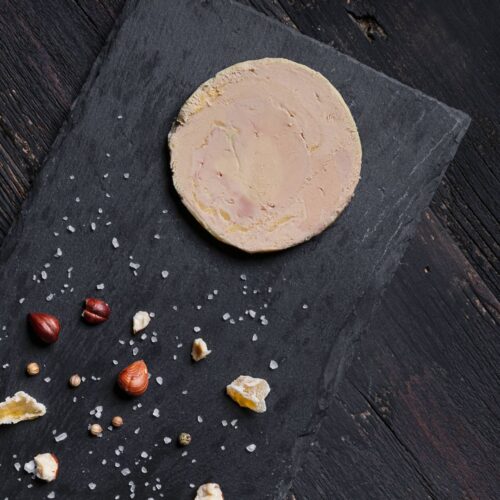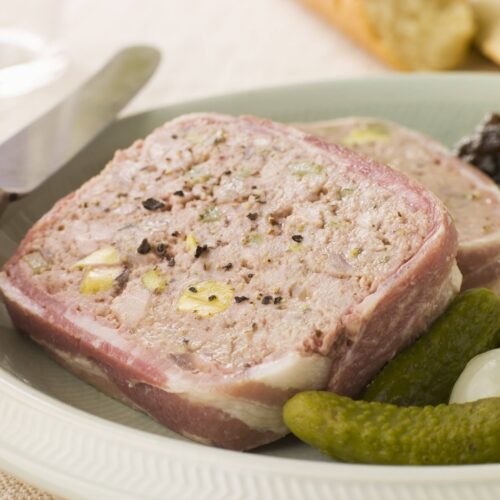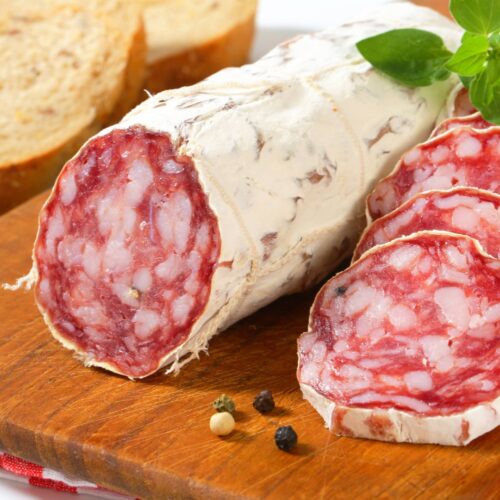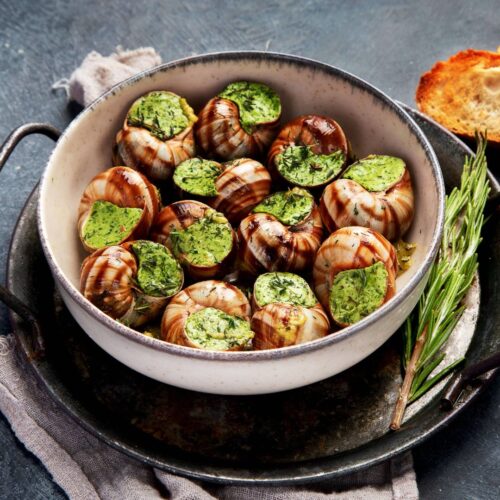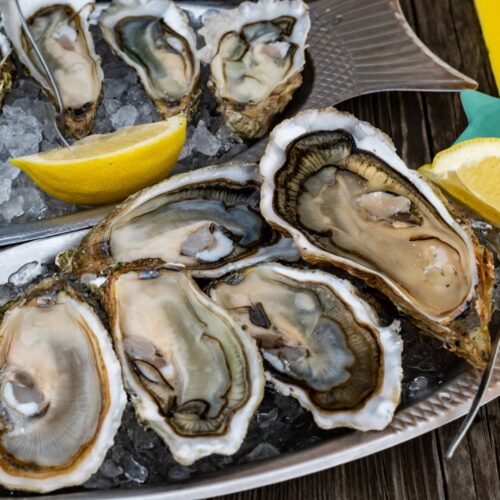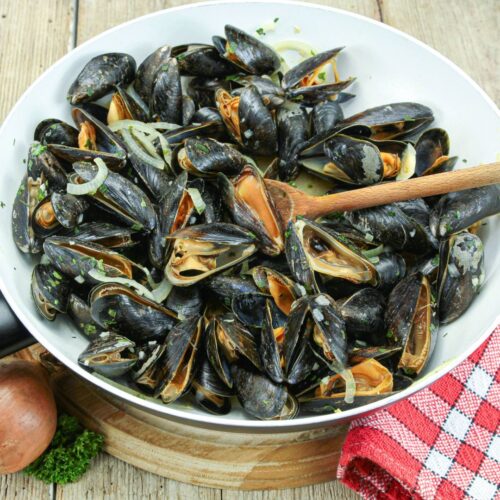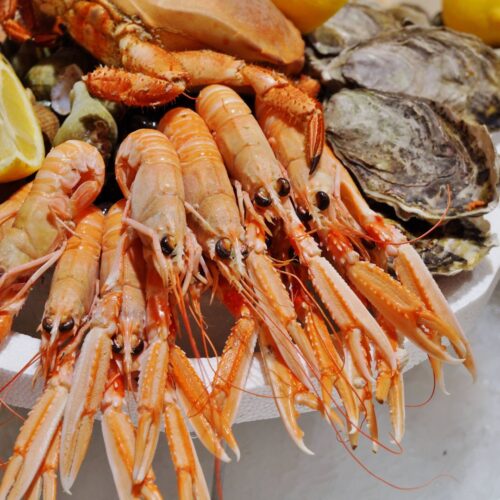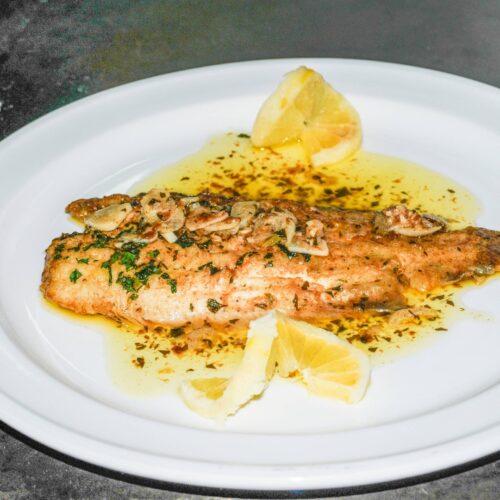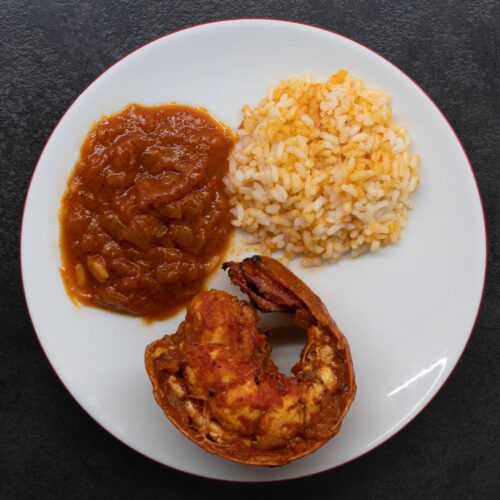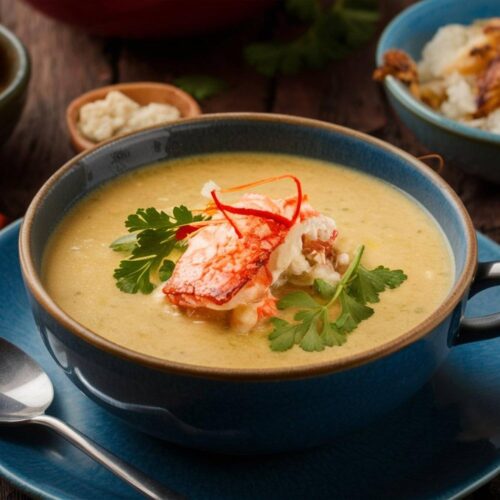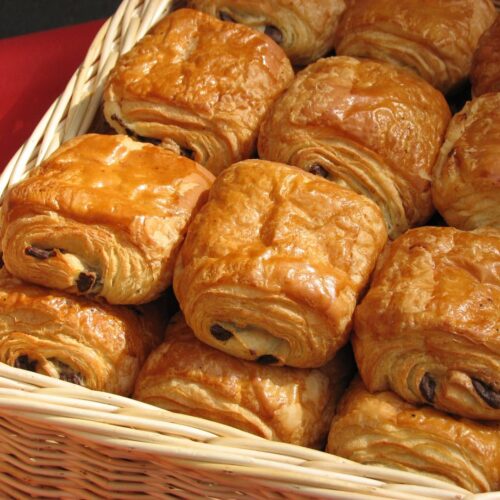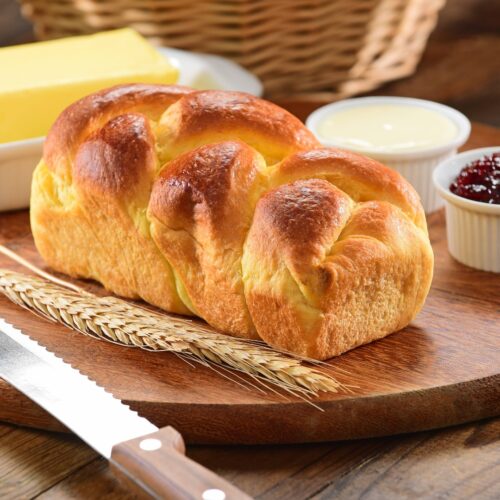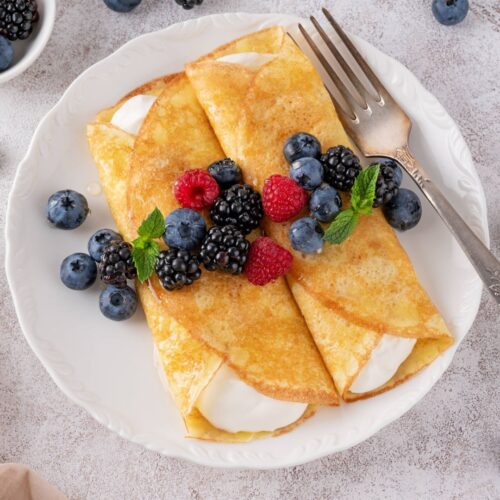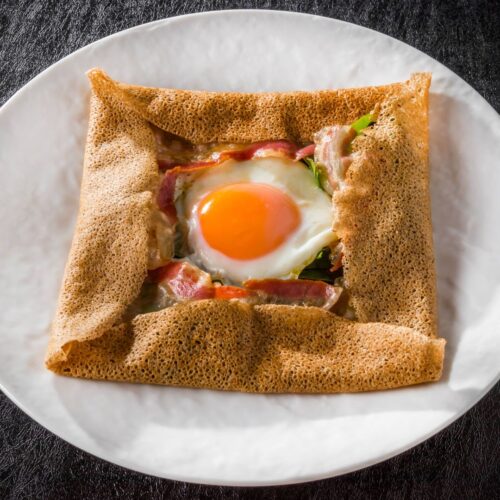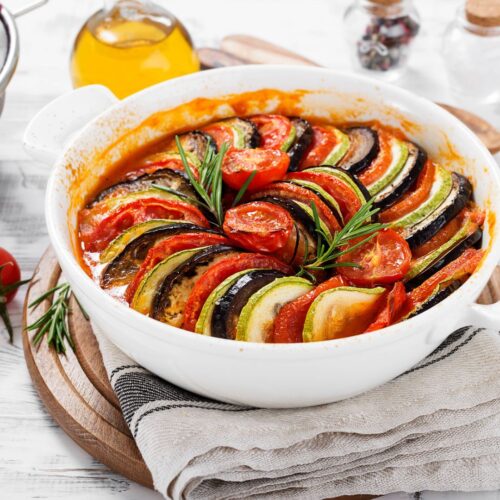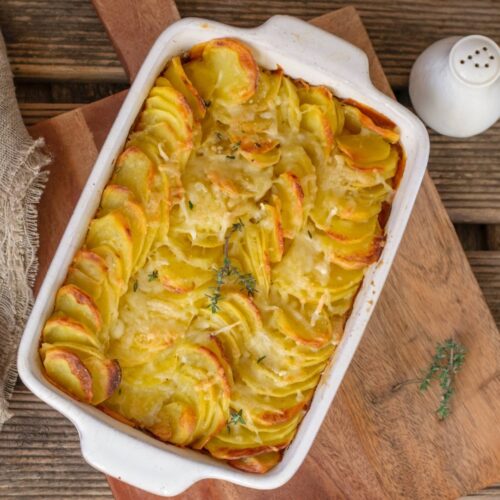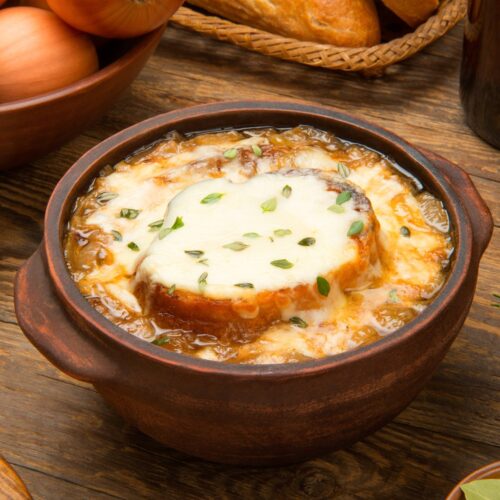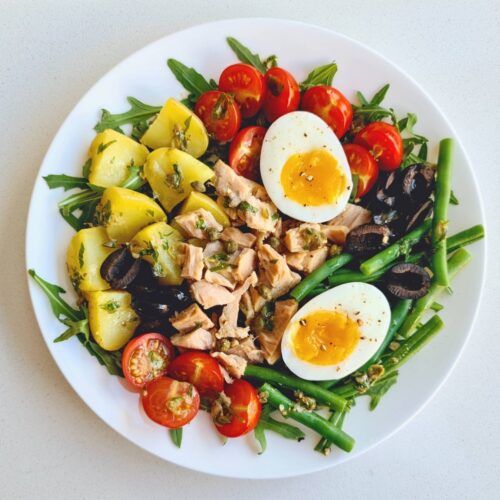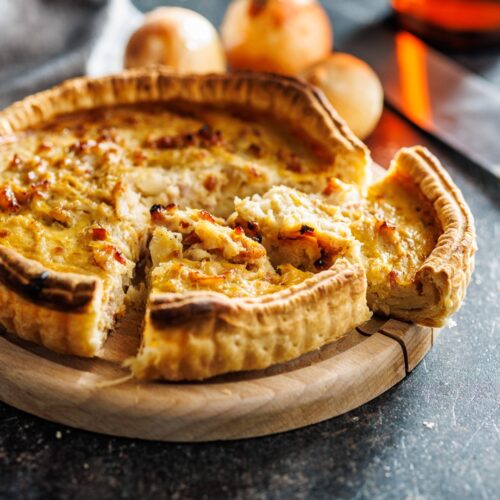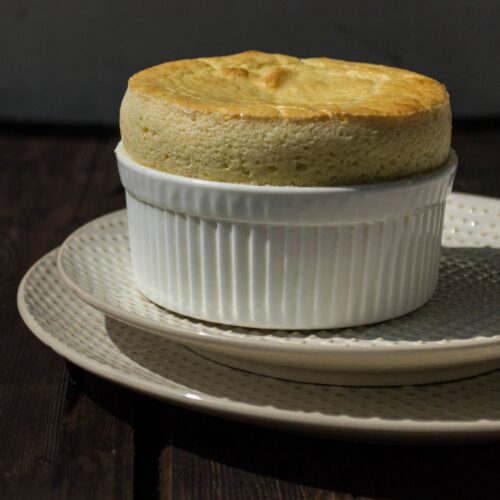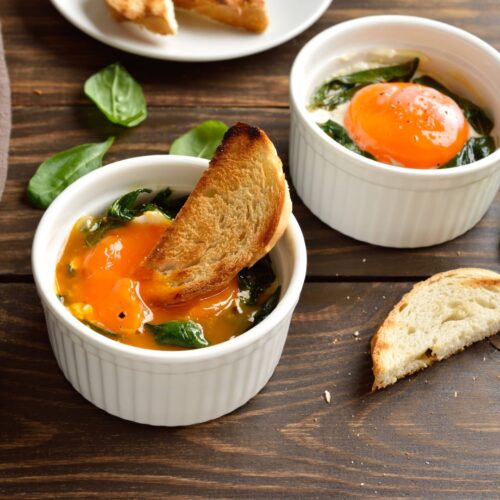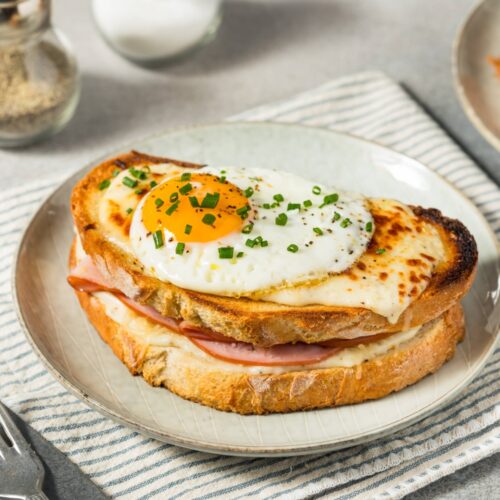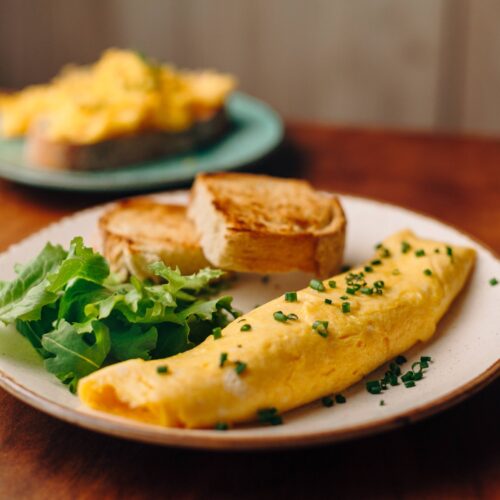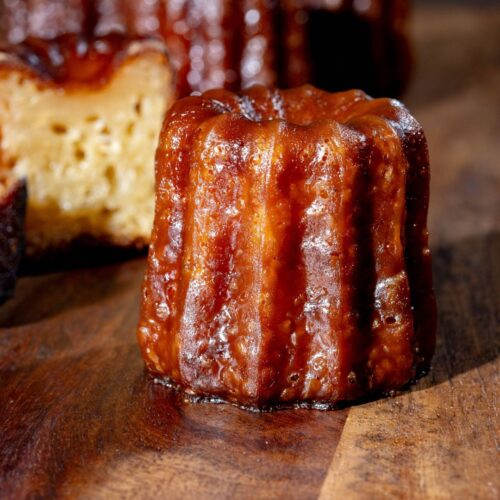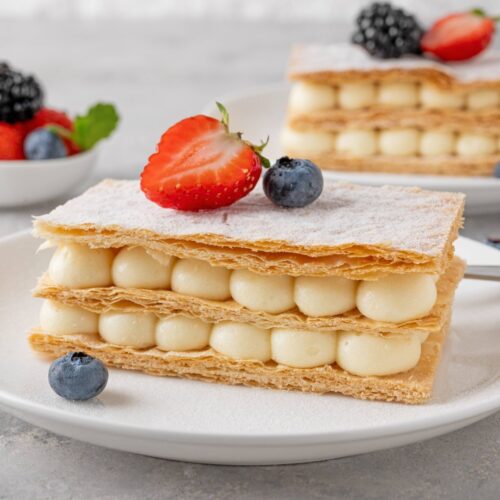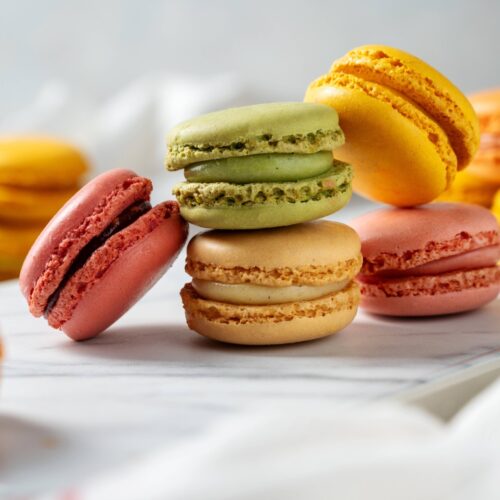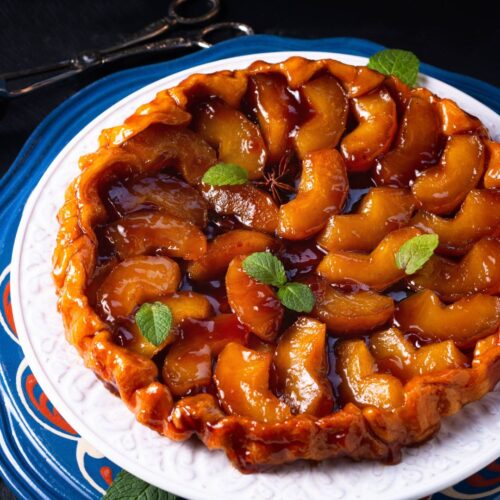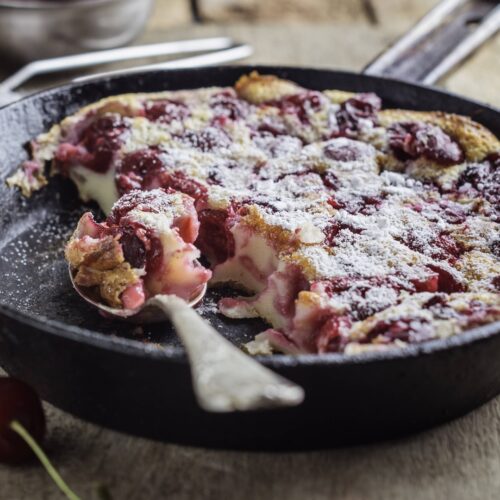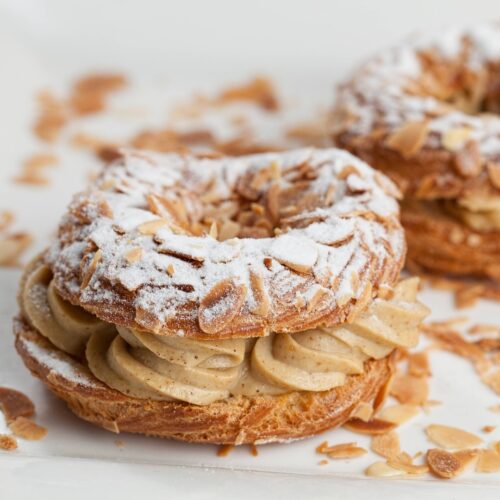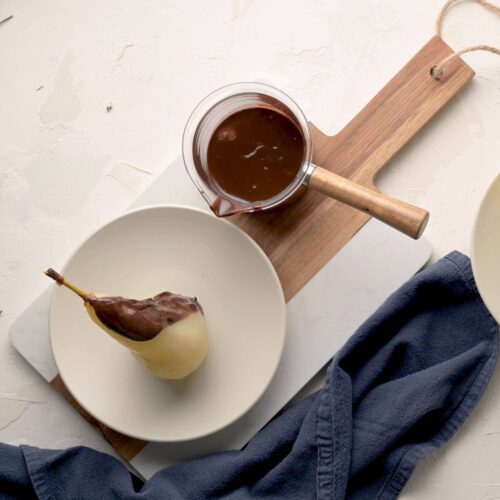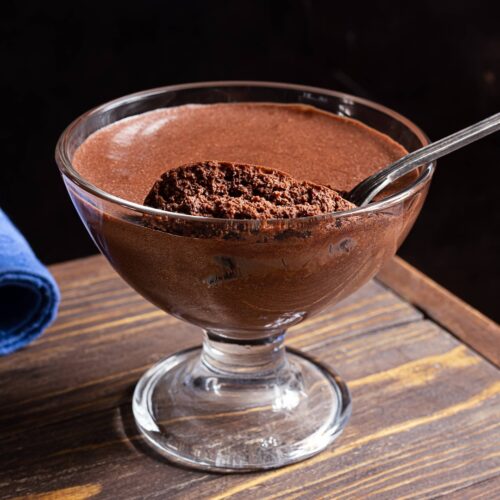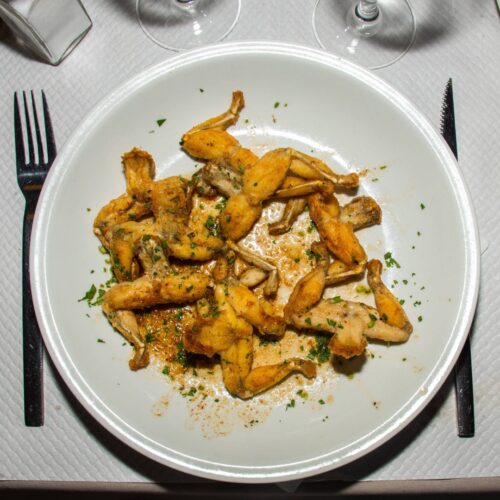THE ESSENCE OF FRENCH CUISINE
French cuisine has a reputation for being very complex, and this is partially true for professional haute cuisine, which demands technique and skills. Everyday French cooking is relatively simple, rooted in fresh ingredients; dishes are rustic one-pot meals with minimal processing, yet, even though simple, it is still a fare for eaters. Despite the simplicity, the cook must understand how flavors are built and combined.
The idea behind a meal is to enjoy the moment. That is the French way. French meals are ritualistic, often with multiple courses of small portions aimed at enjoying a meal slowly, which contrasts with the simpler, faster eating in other European cultures.
Breakfast is not a big deal in France: a slice of crusty bread, a buttery croissant with fruit preserves, and coffee with steamed cream. In some regions, it’s even common to dip buttered bread in coffee for breakfast! Lunch is a meal that resisted the fast-food trends; a lunch starts with a seasonal soup or veggie dish and is followed by meat or fish, potatoes for starch, green salad, cheeses, and fruit.
Most meals include bread and wine. Wine is hardly a separable part of French dining culture; it’s seen as a cultural product, not just as an alcoholic beverage. Pairing wine with food is an art form. In formal dinners, wine is almost always present, served during family meals in moderate quantities – quality and regionality matter more.
Now, younger generations drink less wine than older, and non-alcoholic alternatives are increasingly common.
GRAINS IN FRENCH CUISINE
France has a huge bread, pastry, and baking culture, with daily baguettes, croissants, and artisanal patisseries. French bakers and pâtissiers undergo severe training to perfect the precision required for creating delicate layers, textures, and flavors. The emphasis on top-tier butter, fine flour, and fresh cream ensures that the final products are both exquisite quality and refined.
Why is French bread, particularly the baguette, so different from other breads?
The uniqueness began with the Revolution when the wealthy enjoyed refined bread while the poor ate dark. With the shift toward equality, white bread became accessible to everyone. As per French law, authentic bread can only contain four ingredients: wheat flour, water, salt, and yeast. No preservatives, additives, or oils are allowed – this is why it must be consumed fresh or otherwise go stale more quickly. French bakers use soft wheat; the dough has multiple rises, allowing it to develop its airy crumb. French bread requires steam during baking, which creates a crispy, golden-brown crust and chewy inside.
While France is famous for its bread culture, modern French wheat consumption is actually moderate compared to many other countries. The average person consumes about 50 kg of bread annually, which is almost 4 times less than, for example, the leading country, Turkey with almost 200 kg per person (source). Unlike some cultures where bread is a staple accompaniment to every meal, French consume it in a more structured manner: very often at breakfast and almost at every following meal later, but portion sizes are smaller, and the diet is diversified with other product groups.
In French cuisine, rice, corn, and other grains play a relatively minor role compared to wheat; they usually have side or specific uses.
PRODUCE IN FRENCH CUISINE
VEGETABLES are rarely the main focus of a dish in classic cuisine, but they do play supporting roles in building flavors, creating sauces, and providing accompaniments (with some exceptions, of course, in the case of ratatouille, tian, or potage). France is known for its extensive use of leeks, thin green beans, endives, carrots, turnips, and potatoes. Veggies are never overcooked. Common preparations are glazing – cooking in butter and sugar until they develop a shiny coating and steaming in their own juices with butter. The concept of garniture, or vegetable accompaniments, is important, and it includes jardinière (mixed diced vegetables) or printanière (spring vegetables) preparations.
Mirepoix is a foundational combination of diced onions, carrots, and celery, which is a key component in stocks, soups, and stews, subtly infusing dishes with flavor base.
The French also have a fondness for wild mushrooms; they are passionate about foraging. Many pharmacists in France are trained to identify wild mushrooms, and people can bring their foraged mushrooms for free verification. Porcini, morels, and chanterelles are liked, as well as black diamonds – the truffles. Truffles infuse dishes with rich mushroom-like umami deep forest earthiness, sometimes compared with the wet soil, only in a good way. True French truffles remain extremely expensive (€600-€1,000 per kilo) (source) and luxurious ingredients.
The French prefer perfectly ripe fruits eaten at their peak. Popular are apples (particularly from Normandy), pears, cherries, plums, grapes, and various stone fruits. The French have perfected the art of poaching fruits in wine or sugar syrups, as seen in classics like poires belle hélène —poached pear.
MEATS IN FRENCH CUISINE
While meat is often the center of main dishes, portions are smaller than in many other Western countries. A typical French meat serving might be 130g (source), served with accompanying vegetables and sauces.
The French butchery is unique, with cuts of meat that don’t directly correspond to those in other countries. Butchers tend to break down carcasses differently, resulting in cuts like bavette – flank steak, onglet – hanger steak, and palette – blade, though they are increasingly found outside of France.
Charcuterie represents another crucial aspect of French meat traditions, even the term is French. It comes from the words chair – flesh, and cut – cooked. Historically a charcutier was a French craftsperson who specialized in preparing pork products. The art of making pâtés, terrines, sausages, rillettes – potted meat slow cooked in fat, galantines – lean ground poached meat pressed into cylindrical shape, and other preserved meats is a highly developed craft. Each region has its authentic, protected specialties, from the saucisson–cured sausage of Lyon to the jambon de bayonne – cured ham.
Regional meat preparations vary widely throughout France. The southwest is famous for duck and goose, particularly confit de canard – duck leg and foie gras – fatty liver. Burgundy is known for boeuf bourguignon; Alsace has a pork tradition influenced by German culture. Coastal regions naturally developed around seafood, while inland around poultry and red meat.
The French affinity for duck and goose is distinctive in how these birds are prepared. Unlike other cuisines that treat duck as a specialty, French cuisine incorporates it into everyday cooking through duck confit, duck breast, and duck fat for cooking. In southwestern France, duck and goose fat are traditionally replaced by olive oil or butter as the primary cooking fat.
French cuisine has developed sophisticated preparations for wild boar, venison, rabbit, and game birds, like chevreuil à la royale, a luxurious slow-cooked venison dish with red Burgundy wine blood-thickened sauce, chocolate, or bitter cocoa.
The French approach to organ meats and offal is more elaborate than that of other Western cuisines—they elevate them to haute cuisine. Foie gras, ris de veau – sweetbreads, rognons à la moutarde – kidneys in mustard sauce, cervelles au beurre noir – brain in brown butter, are offal delicacies.
The stereotypes might suggest that the French eat snails and frogs often. What they do represent is the French ability to transform humble ingredients into respected dishes. Frog legs were originally a protein necessity in rural areas, harvested by pheasants in ponds and marshlands. In contemporary gastronomy, frogs’ legs occupy an interesting position between tradition and novelty. Despite their association with French cuisine internationally, today, people rarely eat frogs’ legs, or many have never tried them.
FISH AND SEAFOOD IN FRENCH CUISINE
Classical French cuisine has developed specific techniques for fish preparation – they define cooking times, match specific sauces for different types of fish, and fillet fish in certain ways that have set international standards. We could exemplify this French approach by looking at sole meunière: a very fresh Dover sole is filleted, lightly dressed in flour, cooked shortly in butter till golden brown, and served with a simple sauce of browned butter, fresh lemon juice, fresh parsley, and capers.
In formal meals, fish is served as a distinct course after an appetizer and before the meat course. Even in everyday cooking, fish is presented as a complete dish with its own garnishes and sauce rather than as part of a mixed seafood platter.
The Atlantic Brittany and Normandy are known for shellfish, particularly oysters, which are slurped raw with a squeeze of lemon and a light mignonette (shallots and vinegar) sauce. The Atlantic coast is also rich in lobsters, which are served grilled or in more elaborate dishes like homard à l’armoricaine. Normandy is famous for scallops – coquilles Saint-Jacques, and moules marinières – mussels dish.
The Mediterranean coast offers a different approach to seafood – warmer climates allow other species to thrive. Here, red mullet (rouget), sea bass (loup), and John Dory (saint-pierre) are grilled with olive oil, tomatoes, and Provençe herbs. The iconic bouillabaisse of Marseille, a complex fish stew made with at least three types of fish, represents the pinnacle of Mediterranean fish cookery. Created by Marseille fishermen using the bony rockfish they couldn’t sell to restaurants, once cooked in a pot of seawater right on the beach. Now, it’s a luxurious meal authentically served in two courses, first: the broth with bread and rouille (garlicky saffron mayonnaise) and the second: fish and seafood.
MILK AND DAIRY IN FRENCH CUISINE
The role of dairy and milk products is quite nuanced. Each region has its own climates and terroirs that affect dairy, and specific cattle breeds in regions produce unique milk, which results in a very varied assortment of milk products.
Fresh milk is not traditionally consumed much as a beverage, but crème fraîche —cultured cream—is fundamental.
Also essential in French cooking, especially in sauces and pastries, is butter: it must be at least 82% fat, while 80% is a standard in many countries. France has traditionally been divided into two butter regions: the north and west, like Brittany and Normandy, where salted butter is preferred, and the central and eastern regions, where unsalted dominates. This dates to when salt was heavily taxed, making salted butter a luxury in certain areas.
Yogurt in France is served plain, sold in small glass pots, and is eaten for a light breakfast or as a dessert.
Each region maintains its cheese-making heritage; Normandy is famous with camembert and livarot, Auvergne produces robust cantal and saint-nectaire, the Loire Valley is known for exceptional goat cheeses, Burgundy is home to pungent époisses. Many kinds of cheese are law-protected.
Beyond a standalone course, cheese is vital in cooking, from the humble croque monsieur to cheese soufflés, gratins, and quiches. In all the dishes, cheese is used to enhance rather than dominate.
DESSERTS IN FRENCH CUISINE
French desserts stand out from other cultures in several ways.
French desserts are distinguished by their extensive use of butter, particularly in laminated doughs for croissants and puff pastry. Additionally, they typically feature a more restrained level of sweetness compared to American, Middle Eastern, or Indian desserts. For example, a French chocolate mousse emphasizes chocolate flavors rather than overwhelming sweetness, while fruit tarts allow the natural sweetness of fruit to shine through.
French desserts place enormous emphasis on visual presentation. While other cultures certainly care about how desserts look, French pâtisserie takes it to another level, treating each piece as a small work of art. This differs from, for instance, rustic Italian or homestyle American desserts, where taste might be prioritized over appearance.
French desserts often feature multiple contrasting textures in a single dish – think of the crisp caramel top and silky custard of a crème brûlée or the flaky layers and smooth cream of a mille-feuille.
Lastly, French desserts often have specific contexts and times when they should be eaten: croissants, pain au chocolat, and chouquettes are strictly breakfast items; madeleines, financiers, and macarons are typically afternoon treats, while crème brûlée, tarte tatin, and mousse au chocolat are reserved for post-dinner desserts.
